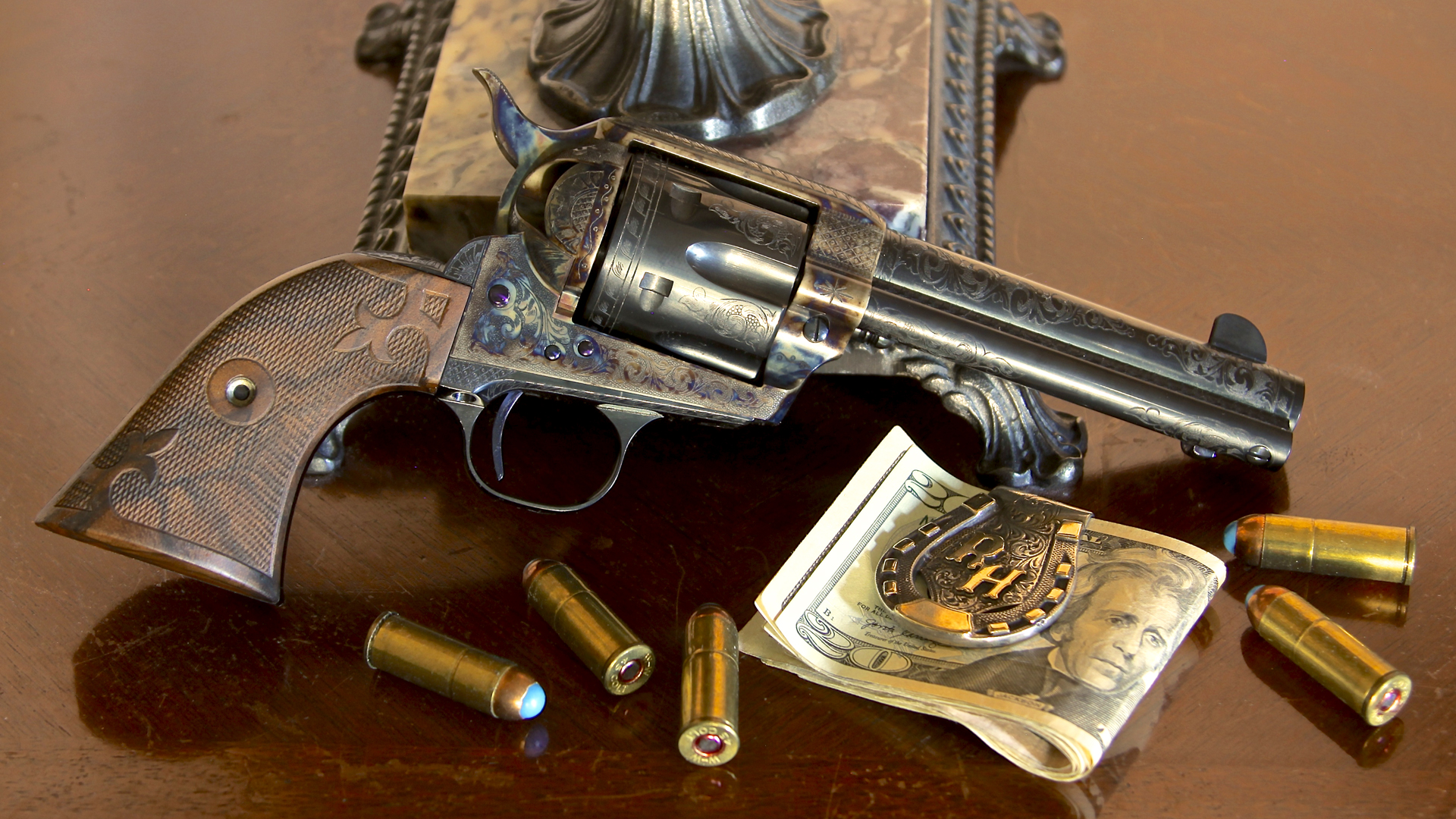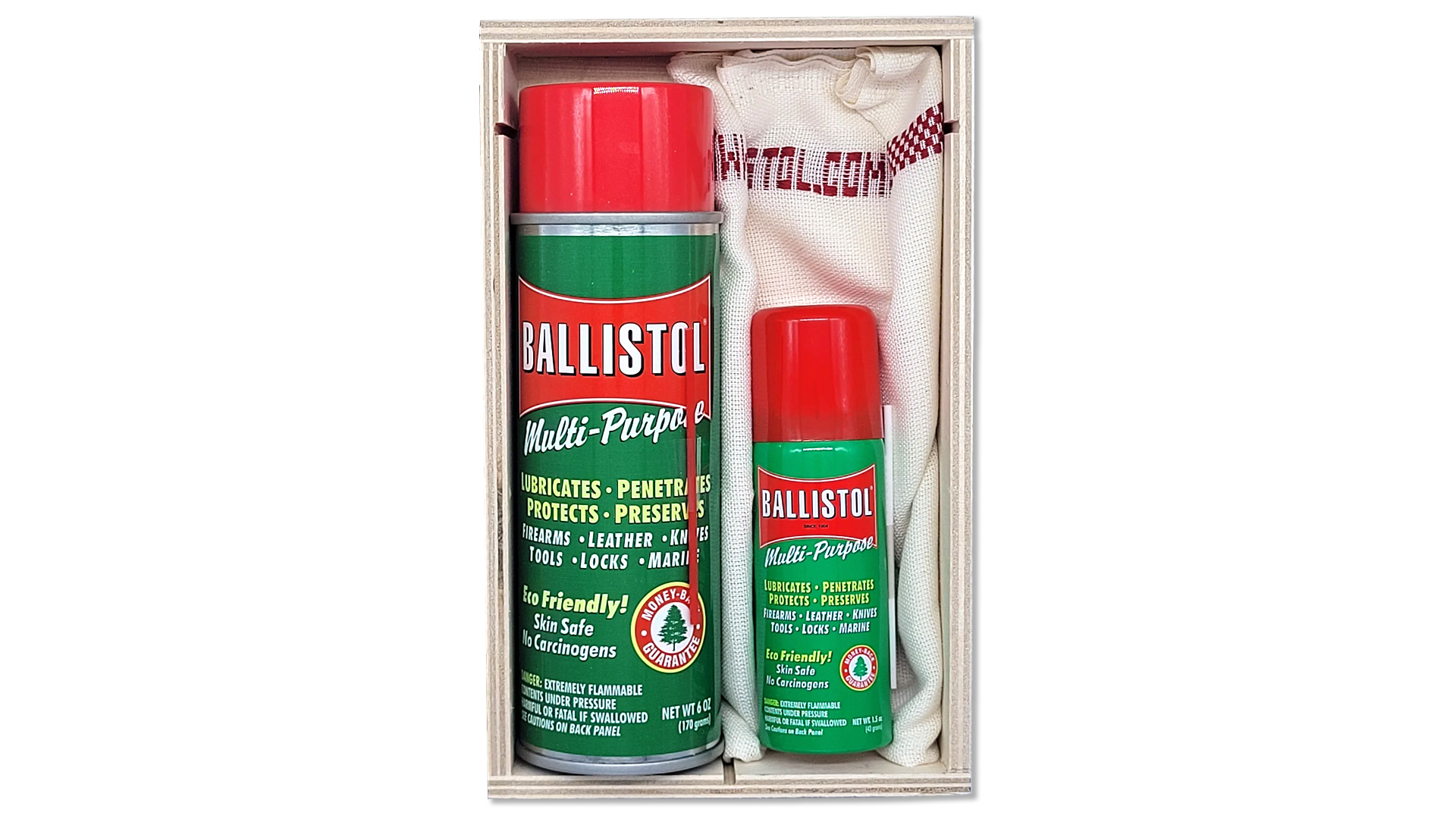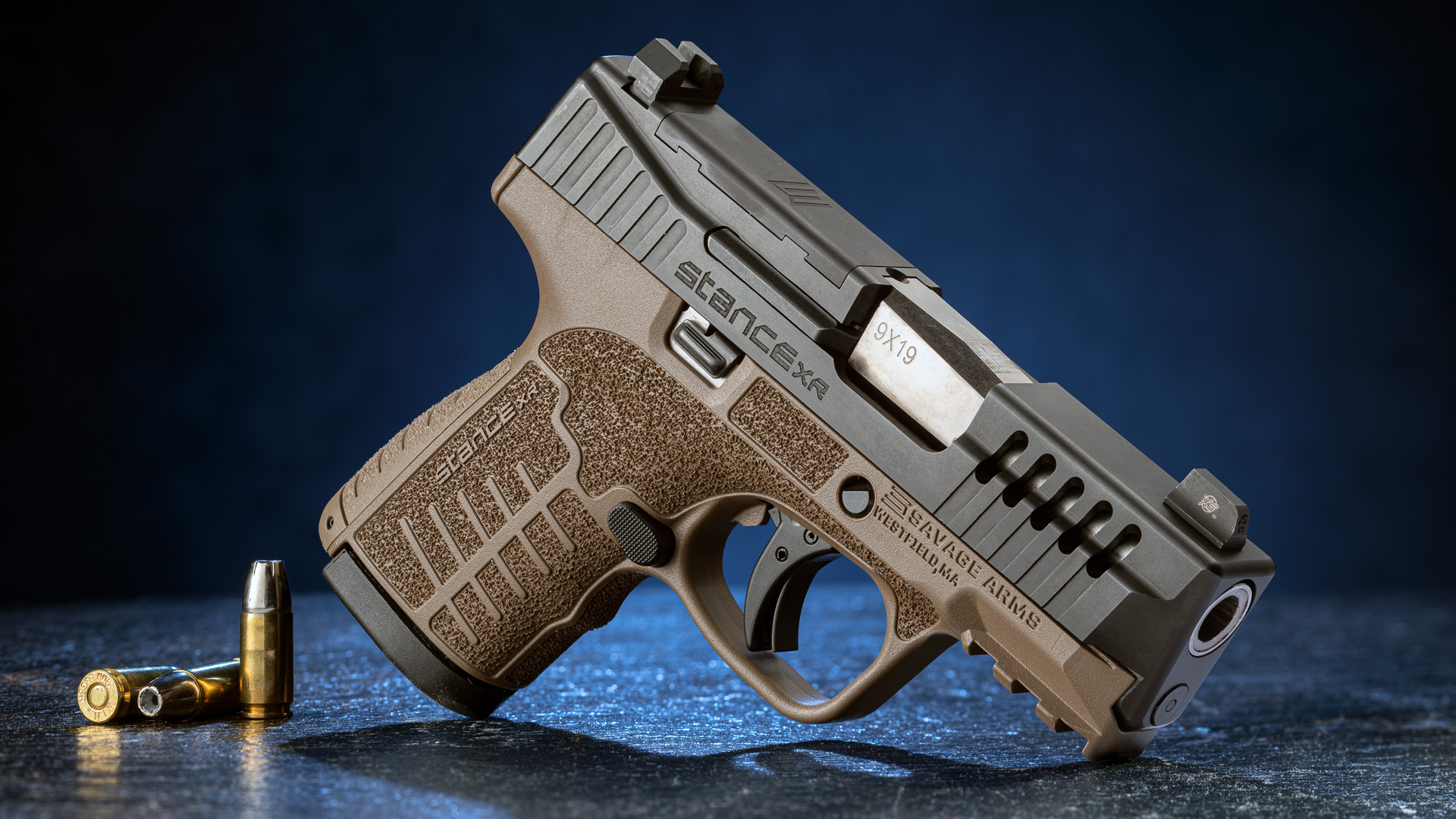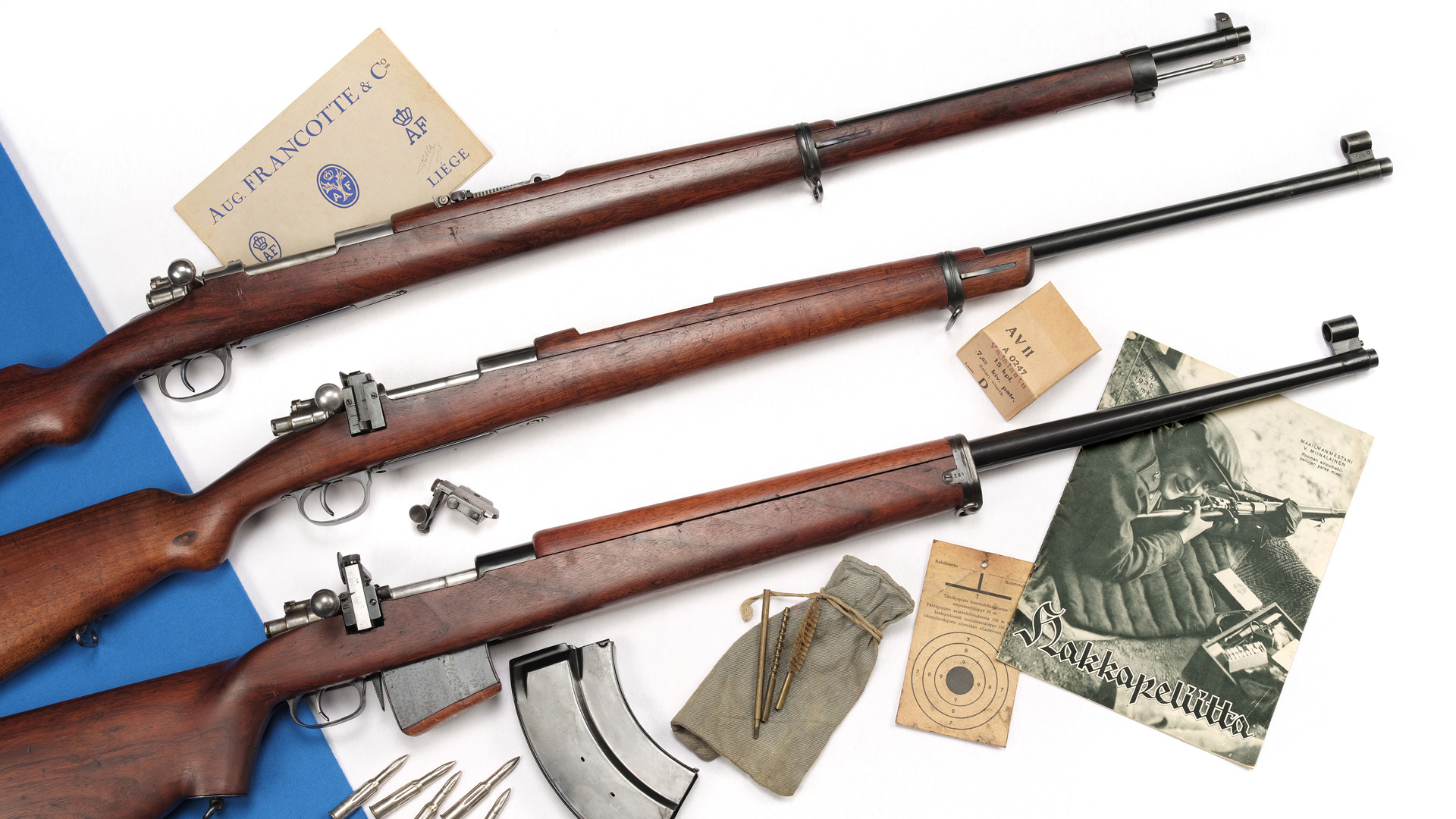
Back in the 1980s, when Cowboy Action Shooting was just getting started, I attended one of the first matches held at Norco, Calif., in a dual role of gunwriter and competitor; when I wasn’t shooting with a pair of Single Action Armys, I was shooting with a Canon camera. During the competition, one of the shooter’s wives—seeing a double buscadero rig around my waist and a long lens camera around my neck and obviously under the mistaken impression that I must know something—approached me with a question.
“My husband,” she said, pointing to one of the shootists blazing away with a brace of Ruger Vaqueros, “has spent a fortune on his competition guns, but we don’t have a pistol for our home defense. What would you recommend we should get?”
“He’s using them right now,” I replied, referencing the two Vaqueros.
It took a moment for my comment to register, but then she got it. “Oh,” she said, matter-of-factly.
 Short-barreled single-actions, such as this Uberti 3½” barreled Short Stroke CMS Pro ($845), are more than up to the task of providing close-range defense.
Short-barreled single-actions, such as this Uberti 3½” barreled Short Stroke CMS Pro ($845), are more than up to the task of providing close-range defense.
Many of today’s otherwise-experienced shooters and their families do not take the single-action revolver seriously as a home-defense gun, even those who use them regularly for plinking or competition. Yet for more than 100 years—until the early 20th century, when double actions and semi-automatics began making inroads as sidearm considerations—the single-action revolver was the obvious choice for a multiple-shot, close-range, home-defense arm. Shotguns and rifles often penetrated more than their intended targets, traveling through walls, neighboring dwellings and other objects that weren’t meant to be hit.
You can be sure that when those legendary lawmen of yesteryear, such as Wyatt Earp, Pat Garrett and Bill Tilghman, weren’t wearing their sixguns in pursuit of—or defense from—outlaws, they may have unbuckled their gunbelts at home, but still kept their single-actions close at hand, on tabletops, in desk drawers or by their bedstands at night. That habit served them well, as Earp and Bat Masterson, for example, died of natural causes, as did “Texas” John Slaughter and other frontier gunmen who made the single-action revolver a welcomed houseguest.
 For many years, the author used his 3”-barreled Colt SAA Sheriff’s Model (top) and later, a 4”-barreled Colt SAA Storekeeper’s Model (bottom) for his home-defense guns, but has since retired them in favor of the newer Standard Manufacturing Single Action.
For many years, the author used his 3”-barreled Colt SAA Sheriff’s Model (top) and later, a 4”-barreled Colt SAA Storekeeper’s Model (bottom) for his home-defense guns, but has since retired them in favor of the newer Standard Manufacturing Single Action.
That same mindset is just as viable today, even with the proliferation of semi-automatics and double-action revolvers geared for EDC and home defense. Why shouldn’t the single-action also be a feasible consideration? In some ways, it could even be better choice. If a person is comfortable, competent and skilled in using a single-action, that makes it an obvious option. For another thing, the single-action revolver is among the safest of all handgun platforms: unless someone manually cocks the hammer and pulls it all the way back to full cock (assuming it is resting over an empty chamber if it doesn’t have a transfer bar system) and then physically pulls the trigger, there is absolutely no way the gun can fire. With the hammer down, it is simply an inert piece of steel.
In addition, unlike many semi-automatics, the single-action revolver is not ammunition-sensitive, nor are there any worries about “magazine spring fatigue.” Plus, with a single-action revolver, there can be no failures to feed or “stovepiped” rounds. Another factor to consider—especially for those with weak hands—is that many double-actions are extremely difficult to fire in their double-action mode (often requiring an 8- to 10-lb. trigger pull), but a single-action generally has a 3½ to 5-lb. trigger. The only drawback is that, with a stiff mainspring, a weak-handed person may require two hands to cock a single-action hammer, but a competent gunsmith can easily lighten this up, and the task can often be done at home by the simple addition of a Wolff mainspring.
 Cimarron’s New Sheriff Model ($660) features a 3½” barrel and is available in .45 Colt. It is also available in stainless steel and a Bird’s Head Grip as the Lightning, in .45 Colt and .357 Magnum ($904).
Cimarron’s New Sheriff Model ($660) features a 3½” barrel and is available in .45 Colt. It is also available in stainless steel and a Bird’s Head Grip as the Lightning, in .45 Colt and .357 Magnum ($904).
Of course, it can be argued that the majority of single-action revolvers only hold six rounds (compared to the seven- to 17-round capacities of most semi-automatics) and reloading is, by comparison with a double-action or semi-automatic, much more time-consuming. But unlike combat shooting, rapid reloading is often not a factor when it comes to home defense, as FBI statistics point out that these situations rarely involve more than three shots being fired—five at the most—and all at extremely close ranges, averaging 3 to 5 yards—less than the length of a room.
This close range factor also negates the argument against the sometimes rudimentary fixed sights on some Colt-styled single-actions and their clones; people will have very little time to use them. Instinctively putting the front sight on top of the largest area of body mass is the key to survival if you have to pull the trigger in such close quarters. Even with single-actions sporting adjustable sights, such as the Colt New Frontier or Ruger Blackhawks, a close-range, home-defense situation will hardly provide the time-consuming luxury of lining up the rear notch with the front blade. In fact, a low-light situation in a darkened hallway or bedroom may make this impossible.
This is where the single-action revolver, with its ergonomically shaped plow-handled grip and ideal balance, comes into its own. But because of the relative ease of pulling the trigger on a cocked single-action revolver, the gun can be brought into action quickly and intuitively. Those using one should always take care to keep their finger outside the trigger guard when cocking the hammer, placing the finger on the trigger only when firing a shot. De-cocking a single-action revolver will require the finger to be placed on the trigger, but only after controlling the hammer with a thumb or support hand to allow it to ease down slowly and carefully.
 The Taurus Deputy ($607), shown in its .45 Colt 5½” barrel version, features a four-click hammer, half-cock loading, and a lengthened cylinder base-pin held in place by the ejector-rod head to prevent loss. The 1791 Gunleather Single Action Ambidextrous Holster (1791gunleather.com) in two-tone Vintage finish ($72) provides a protective method for storing this revolver.
The Taurus Deputy ($607), shown in its .45 Colt 5½” barrel version, features a four-click hammer, half-cock loading, and a lengthened cylinder base-pin held in place by the ejector-rod head to prevent loss. The 1791 Gunleather Single Action Ambidextrous Holster (1791gunleather.com) in two-tone Vintage finish ($72) provides a protective method for storing this revolver.
Basically, single-action revolvers come in barrel lengths ranging from 3” Sheriff’s Models to 12” Buntlines. By far, the best barrel lengths for home defense include the 3½” inch Cimarron New Sheriff Model and Thunderer (the same gun as the New Sheriff but with birdshead stocks), the 4¾” and 5½” Single Action Army and its clones, along with Ruger’s New Model Blackhawks and Vaqueros in barrel lengths of 4.62” to 5½”. There are also traditionally styled single-actions with 7½” barrels for increased pointability, as found on some of the SAA, Remington 1875 and Smith & Wesson top-break replicas from makers such as Uberti and Pietta, as well as the Colt Single Action Army.
Speaking of the Colt Peacemaker, this is the self-contained metallic cartridge gun that started it all more than a century and a half ago. However, there is no denying that today the Colt SAA is among the priciest of single-actions and, in fact, has long ago ascended into the ranks of collectibles, which means many current owners have retired their Model Ps to the gun safe.
 Ruger’s New Model Bisley in .44 Special makes for a rugged and reliable home-defense gun.
Ruger’s New Model Bisley in .44 Special makes for a rugged and reliable home-defense gun.
For many years, I kept a Third Generation nickel-finished SAA Sheriff’s Model in my nightstand drawer, as there was little chance it would become damaged in this protected environment and with its Cor-Bon .45 Colt self-defense loading, it offered me plenty of late-night assurance. Later, when Colt introduced a limited run of Storekeeper SAAs, I switched to that 4”-barreled version. Obviously, neither of these sported an ejector rod, but as previously mentioned, that is largely a moot point when it comes to a home-defense situation.
However, while SAAs abound on the secondary market, currently made Single Action Armys are in short supply, and their prices are escalating. It is for that reason that I have recently gone to an engraved blued and casehardened Standard Manufacturing Single Action in .45 Colt. While they are priced at about the same as a Colt, they are much more readily available and are extremely well put together, with every part hand-fitted after being machined and polished from a solid block of 4140 steel. And when it comes to home defense, I want the best gun I can afford. Moreover, because this single-action is absolutely identical to the SAA, I decided to pay extra for C engraving (the only pattern Standard Manufacturing offers), inasmuch as this single-action wasn’t going to get knocked around on the hunting trail, a fate that has befallen many of my other Colts and Rugers over the years.
 The Colt Single Action Army has been defending the homes of law-abiding citizens for more than 150 years.
The Colt Single Action Army has been defending the homes of law-abiding citizens for more than 150 years.
On the opposite end of the pricing spectrum, Taurus—which had previously produced a “Gaucho” single-action back in 2005—has re-entered the single-action market with an improved Deputy version with a transfer bar, which means it can safely carry six rounds (a la New Model Ruger Blackhawks). Available in either 4¾” or 5½” inch barrels and in .357 Magnum or .45 Colt, the fact is you could buy three Deputies for the price of one Colt Single Action Army or a Standard Manufacturing Single Action.
So, if you’re in the market for a defensive single-action revolver, which one should you get? Colts will continue to hold their value, the current Standard Arms Single Actions are extremely well made, Rugers are absolute workhorses and replicas such as the Italian clones and the Taurus Deputy are great values. The choice is up to you, your budget, and yes, your personal preferences. While there are an incredible number of viable home-defense arms of all types out there, if you’re comfortable with it and understand its limitations and capabilities, any quality single-action revolver is more than up to defending you, your home and your loved ones—a task the single-action revolver has been effectively performing for more than a century.
 Because of its relatively light trigger pull, when cocking a single-action, always keep your trigger finger off of the trigger until ready to shoot.
Because of its relatively light trigger pull, when cocking a single-action, always keep your trigger finger off of the trigger until ready to shoot.



































